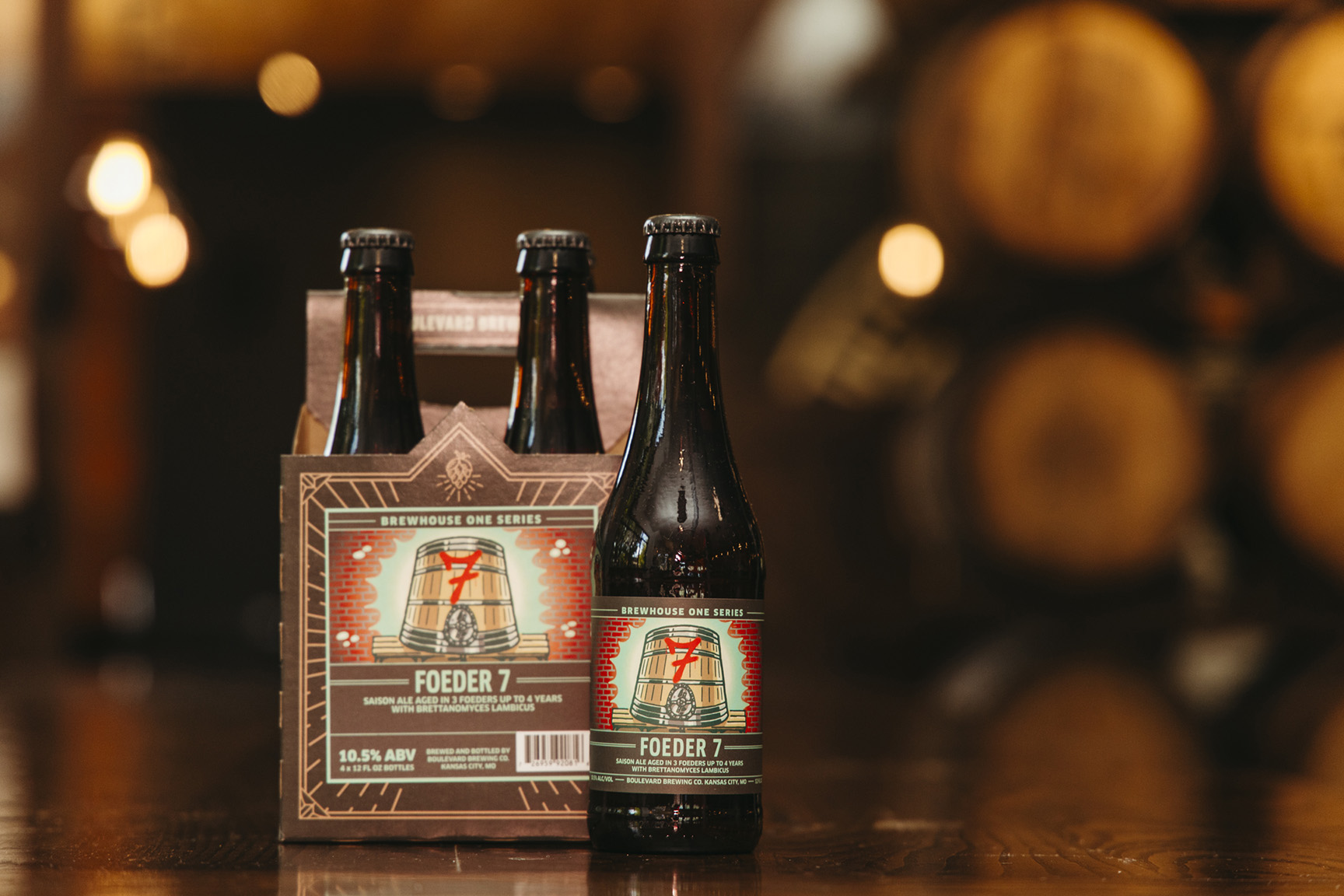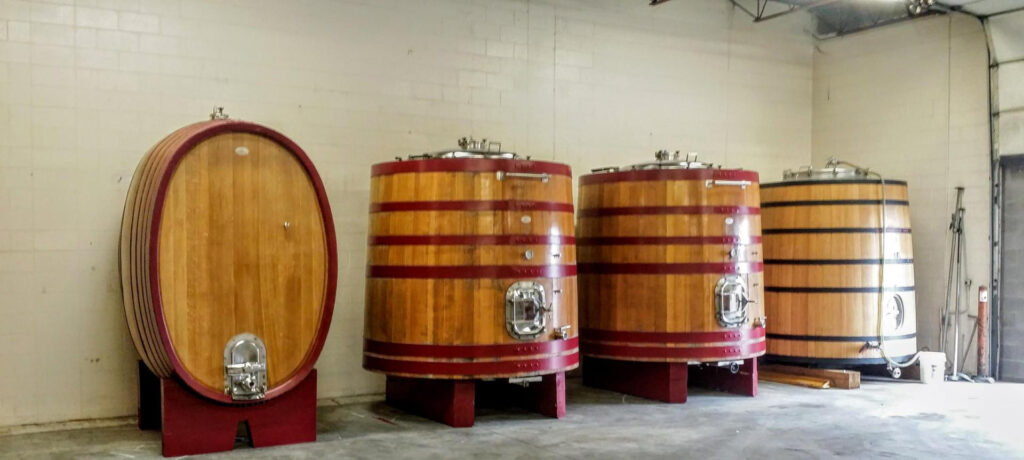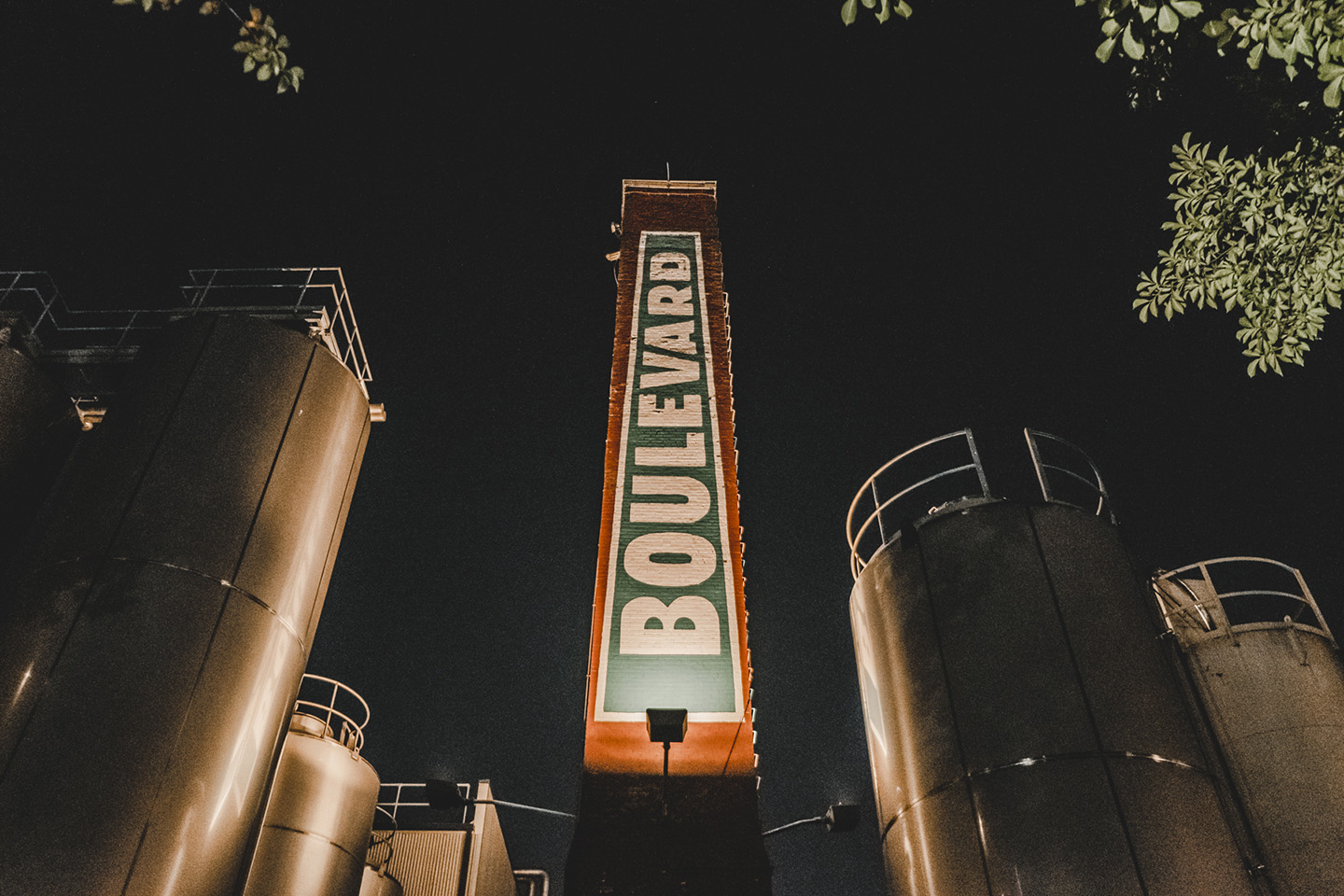Brewhouse One: Foeder 7
Foeder Aged Saison Ale

Origin Story
By Adam Hall
The latest release in our Brewhouse One series feels kind of like a superhero origin story: Mild-mannered Tank 7, American Saison by day, is exposed to multiple strains of wild yeast in a magical vessel called a “foeder”, and is transformed into something bigger, stronger – Foeder 7.
While not exactly a caped crusader, the base beer, a Saison brewed with additional buckwheat and oats, was aged in 3 foeders for up to 4 years. Multiple strains of Brettanomyces were present in the foeder, including Brettanomyces Dekkara which imparts the classic brett character of earthiness and barnyard funk. Brettanomyces Lambicus was also present, imparting subtle fruity esters and a touch of lactic acid.
After aging in the foeders, freshly brewed Tank 7 was blended in, approximately 20% of the total yield is fresh Tank 7! Blending in fresh beer allows a brighter character in the final product, resulting in a thinner body and contributing to a complex beer.
I recently caught up with Quinn Reeder and Brent Cox who head up our barrel aging program, to talk about the process of producing Foeder 7, the popularity of Tank 7, and what drinkers can take away from this super beer.

Adam: First things first, for those that might not be familiar, in your words, what is Tank 7 and why do you think it is so beloved?
Quinn: Sure, Tank 7 is an American take on complex Belgian ester profiles, making it more approachable, and drinkable, for a consumer who might not have experience with such styles, especially with what’s available in the American market. To me, Tank 7 is a perfect example of what Boulevard Brewing is all about.
Adam: Also, for those who might not know, what exactly is a “foeder” and how does it differ from vessels you commonly use when aging beer?
Quinn: A foeder is an open-air, wooden aging vessel in which we mature fermented beers. The foeder we used was 60 bbls, or 1860 gallons, made in the 90’s using French oak.
*bbl stands for beer barrel, a commonly used unit of measurement amongst the brewing community. 1bbl = 31 US Gallons.
(cont’d) The vessels we commonly use in brewing are stainless steel, or in our Barrel Aging program we use freshly dumped spirit barrels, the previous occupant, i.e. whisky, provides a more sterile environment for most of our barrel-aged beers. The foeder is not sterile and is a more conducive environment for wild yeast or bacteria.
Adam: Yeah, when I hear of a beer that’s been foeder aged, there comes an expectation of wild yeast, or bacteria given that it’s a good environment for them to thrive. When developing the base beer for Foeder 7, before blending in fresh Tank 7, is there thought put into the grain bill, certain ingredients that those wild inclusions like to chew on?
Quinn: Absolutely, the base beer was inspired by a Saison recipe, but we added 15% buckwheat and a healthy addition of flaked oats in the mash bill. Buckwheat and oats are desirable in these wild-fermented beers for their more complex proteins to keep a little body in the beer while the aggressive Brett strains do their work. We decided to ferment the base beer with our house Tank 7 yeast for primary fermentation in stainless steel with the addition of the Brett strains in the foeder. Along with the Brett strains, we rely on the residual cultures of past wild beers still living in the porous wooden foeder.
Adam: Can you describe the flavor and aroma of Foeder 7? What should drinkers expect?
Quinn: You shouldn’t expect to get the same hop profile as Tank 7, the wild yeast strains have taken their time with those acids in the foeder. This is bright and breezy, with some distinctive funk that gives way to a clean acidic finish. Pair this beer with a picnic on a French countryside.
Adam: Are there any specific flavors or characteristics that fans of Tank 7 will notice in the beer?
Quinn: If you’re drinking Tank 7, it’s easy to think all the flavors of beers come from hops nowadays, when in fact the biggest component of Tank 7’’s flavor comes mostly from the yeast. You’re still going to pull apart those familiar Tank 7 esters out of this release.
Adam: Beautiful. For you and your team, what was the most rewarding part of the process?
Quinn: It’s always rewarding for our team to be able to release wild and sour beers the hard way. We rely on time, wood, and wild yeast to do the job. The fun part is trying to control the uncontrollable, ha ha ha! We are also proud to have this beer be part of the long Tank 7 legacy that is in itself a Kansas City beer.
Adam: I think everyone here at the brewery would echo that sentiment. Thanks for your time buddy!
Quinn: Anytime!
**TOURS AND REC RELEASE DATE DETAILS**
Available exclusively at the Tours & Rec Center on 07/07/24 at 10:00 AM (the best Tank 7 birthday celebration we could think of)!
Enjoy on draft – $5 per 5 oz., or $8 per 8 oz.
Take it home – $24.99 per 4-pack

NEWSLETTER